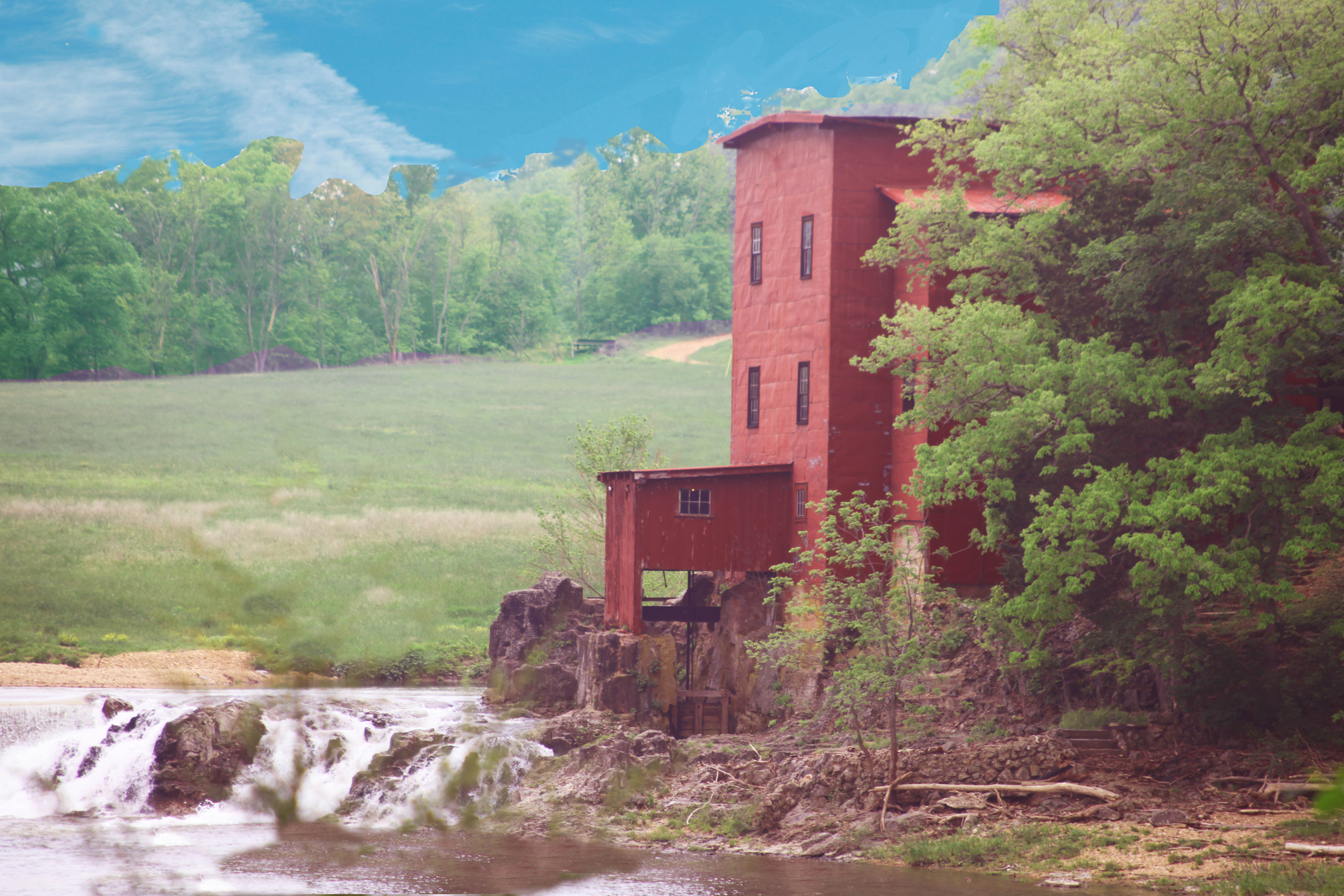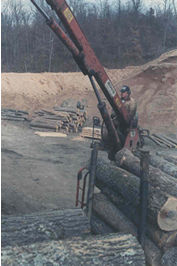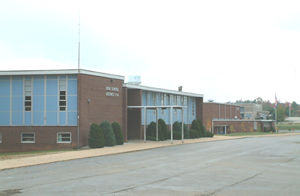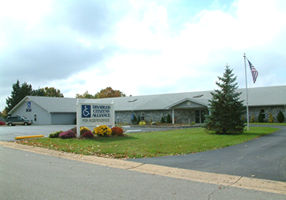|

 Viburnum has a long and colorful history its residents can be proud of, beginning with the Osage Indians who lived and hunted here. In the early 1800's this was country Daniel Boone would have liked: An untamed frontier with virgin timber and plenty of wildlife. Only the strongest and most desperate came to these hills, beginning with hunters and trappers. Viburnum has a long and colorful history its residents can be proud of, beginning with the Osage Indians who lived and hunted here. In the early 1800's this was country Daniel Boone would have liked: An untamed frontier with virgin timber and plenty of wildlife. Only the strongest and most desperate came to these hills, beginning with hunters and trappers.
The Land Act of 1820 set the minimum price of land here at $1.25/acre. But even that price was too steep: Over a thousand acres were later purchased at a tenth that price - just 12.5 cents/acre. Around 1837 small bands of settlers, mostly from Kentucky and Tennessee, began to replace the hunters. The farmers would fire the woods to promote grassy forage, then they would plant grain and corn to feed their hogs and cattle. Just before the Civil War, in 1857, Iron County was formed. As indicated by the county's name, mineral discovery and exploration have been a large part of the area's history. As early as 1877 iron and lead were known to be in the area. The Sligo Furnace Company was formed in 1889, using the rich resources of virgin timber to make charcoal used to fire the furnaces which extracted the iron.

Timber was also used for railroad ties, and some of the men who cut the timber were called tie-hackers. The logs and ties were hauled to tie yards. One of these tie yards was where the present-day Quad County Plumbing is located, on Highway 49. The logs were stacked all the way to where the ball park is today. You can still see evidence of that first railroad between Viburnum and Dillard.
That furnace at Sligo created an industry in addition to farming and gave birth to a string of rough settlements which popped up along the railroad: Sligo, Dillard, Viburnum, Bixby, Huzzah, Goodland at East End (the east end of the railroad).
Dr. Jessee Mincher was one of the colorful characters from this area. Like many other pioneer doctors, he visited his patients on horse and buggy, and later a Model T. He was paid for his services with vegetables, fruit, chicken, or other meat. Sometimes he wasn't paid at all. Other notable locals were the Wisdoms who started a mill at Dillard, and F.N. Thomas, the local blacksmith. In 1889, the boom town of Viburnum was home to 12 people.
By 1921 the Sligo Furnace Company had closed. Animals like cattle and hogs would range in the woods during the summer, and be sold before winter; only a few were kept to feed over the winter. This was happening as late as 1960. Horses, too roamed on the open range in the new Viburnum. 
After the loss of the virgin timber, the land began to sprout weeds, prairie grasses, sassafras and post oak runners. Again the purchase price for land was low. The government formed the Clark National Forest (which later became apart of Mark Twain National Forest), which brought management to the ruined forest. It also improved recreation like fishing, camping, hiking, and canoeing.
During this time, small farms raised wheat and corn. Most of the families went to the city to work, and only 4 or 5 families remained. Only 3 or 4 houses were left in the early 1950's. One of them was Quad County Plumbing, the oldest commercial building in Viburnum. This structure, originally 12 x 12, has been a weekend home, a church, a grocery store, a café, a post office, a beauty shop, and a feed store. It had been expanded many times.
In 1955 St. Joe Company discovered valuable lead ore, and started developing the area in 1957. St. Joe hired an engineering and city planning firm to lay out the area for the new Viburnum, a town which would provide churches, schools, shopping areas, and government. The plan was for #28 mine and mill to be within the city limits, to help finance the city with its tax revenues. St. Joe laid out the streets, which were gravel for many years. The first trailer court, surrounded by trees, was on the site of the present school gymnasium.
The new city needed a new store, so Ted Ogle and his family moved back to their home from St. Louis and opened a grocery store. His daughter opened a small cafe in the same building. Tourists came for a Sunday afternoon drive to see a city being built.
Later the Stulce family put in a larger cafe and filling station. This became the teen hangout until the Dairy Mart was constructed. Viburnum became incorporated as a City in 1967; the following year, the C-4 School District was formed. An unusual asset to a small community, the 9-hole golf course was built in 1972. St. Joe Mining Company moved to Viburnum 1n 1974, spurring more home construction and the growth of businesses. As part of this development, the Shopping Center was constructed in 1975, including a grocery store, post office, Inn and Restaurant, barber shop, Hirsch Dept. Store, and spaces for several more small businesses.
During flush 1980 there was a bid for a hostile take-over of St. Joe Minerals Corporation by Seagrams; instead, a white knight was found, Fluor Corporation, to purchase the company. That began a time of outside ownership, and the "war chest" reserved for the inevitable downturns of the mining industry was depleted.
1980 also saw the formation of Disabled Citizens' Alliance for Independence (DCAI), which has become one of the largest agencies for the disabled in the state, serving people from five counties.
Strikes are always painful and divisive, especially in a small town, where people who are working can live next door to people on strike. There were two strikes at St. Joe during the early 80's. The first was a three-month strike from April 1st to the latter part of June in 1981. The second was the nine-month strike in 1984, which lasted from April 1 through early December. There were also strikes at other companies. Ozark Lead had a lengthy strike which resulted in closure of the Sweetwater property, but there may have also been shorter strikes there. AMAX had several short strikes and a number of wildcat strikes before their major strike in 1984 (from May 1 to early December).
In 1986, after more mergers and buyouts, The Doe Run Company was formed from the mining divisions of St. Joe Minerals Corporation and the Homestake/Amax mine, mill, and smelter. The next year, the first Old Miners ' Days celebrated the heritage of the area.
The planning process began in 1990, with the formation, from the Chamber of Commerce, of the "Viburnum Tomorrow" committee. It became defunct; rising from its ashes was Viburnum Economic Development Advisory Committee (VEDAC), formed in 1998 as a liaison between the Doe Run Company and the City of Viburnum to proactively plan for the time when mining no longer pays the salaries of half the non-government employees of Iron and Reynolds Counties.
1991 saw both good times and bad for mining: during that period, Doe Run's resource/recycling division was begun, and remains a growth industry; but the low prices of lead meant a significant reduction in the work force.
|
Well maintained wide streets are common in Viburnum. |
In 1998, Doe Run became the only mining company in the area, with its purchase of Asarco. The Millenium saw the five-year bond issue passed, insuring repaving of the streets and needed attention to water and sewer problems. The next year, viburnum.net went on-line, bringing news about the area to people on the InterNet around the world.
2001 also saw the end of the intense Strategic Planning Process, a six-month effort supported grants and led by Heartland Center.
Today Viburnum has grown to 825 people. Streets are paved, subdivisions established, churches and government are all working to build yet a brighter future for Viburnum. |